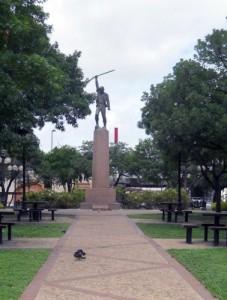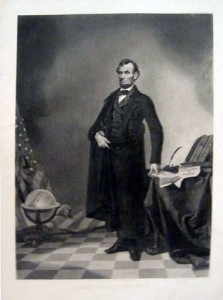I finally got back to “reading” the October 1888 issue (thank you, LibriVox!) and so I’ve decided that it’s time to move this over here from my old blog. We’ll be moving on to the next three articles in this issue, probably on January 26.
Announcement
This is the only title this piece is given. No author is identified, either. A blurb at the end of this piece says that correspondence should be addressed to “Mr. George Kennan,” so perhaps the announcement was written by Kennan. On the other hand, perhaps not.
The announcement is about the formation of the National Geographic Society and their intention to publish a magazine “at irregular intervals.” Interestingly, the announcement says up front that the magazine will publish articles by people from all walks of life who are interested in geography. The National Geographic Society has chosen Washington, DC as the home of the society to further the notion that it is a national organization and not a local one.
One thing that I found interesting is the statement that the National Geographic Society membership was, at the time, around 200 “persons,” which seems to me to indicate that the National Geographic Society had female members nearly from its inception.
I wonder what George Kennan, or whoever wrote this announcement, would think about the National Geographic Society in the 21st century.
Introductory Address by Gardiner G. Hubbard
The introductory address of Gardiner G. Hubbard, the first President of the National Geographic Society, took up eight pages of this issue. Hubbard begins by saying how pleased he was that the National Geographic Society would elect a non-geographer as its first President. Hubbard was an attorney and businessman (and one of the founders of the Bell Telephone Company). He also was father-in-law to the man who would one day become the second President of the National Geographic Society, Alexander Graham Bell.
Hubbard says that he wants the National Geographic Society to continue to include non-geographers and makes reference to using the organization to unite “the scattered workers of our country” with geographic researchers. I am uncertain whether the workers in question are field workers in geography or workers in other fields who are interested, but not professionals, in geography.
The address goes on to cover the history of geography in a very European-centric manner, which is about par for the course of the era. He refers, for example, to Columbus as the discoverer of the Americas, totally ignoring the people who were already there.
Hubbard mentions some other geographical organizations at work in the world, including the Royal Geographical Society of England and urges the geographers of the United States not to be left behind.
Hubbard ends the address with a discussion of the organization of the society, including a department devoted to the “geography of the oceans,” which sounds like oceanography to me, and another that studies the “geography of the air,” which sounds like a combination of meteorology and climatology.
Geographic Methods in Geologic Investigation, by William Morris Davis
Well this was every bit as gripping as I expected it to be. Apparently, in 1888, schools didn’t have geography courses as we know them today. Also, apparently, the intended audience for National Geographic was men (judging by the assumption that the people who attend school are boys). Also, thank heavens for Librvox. I was able to listen to this article as I scanned in photographs from my family’s 1988 vacation to New York City. I made a good 1,000 steps according to my pedometer in the process, as well.
The basic premise is that by studying how things look now, we can draw conclusions about what happened in the past. One of the examples that Davis gives (relatively late in the article, to my mind) is that we don’t need to watch the acorn sprout in order to know that that’s where the oak tree came from. We spend a lot of time in New England here, from discussing the age of the Appalachians to talking about lava sheets in the Connecticut Valley. Much of the rest of the article discusses examples from the United States. This may be due to the fact that the publication is named “National Geographic” and not “International Geographic,” but also Davis makes the point that the United States is the first nationt to make a detailed description of the topography of the country. In fact, Davis says “the systematic study of topography is largely American,” due to studies of the topography of the United States done in the period from around 1840 to around 1870. This study was not done by the United States Geological Survey, however, since the USGS was not formed until 1879.
Davis goes into how to tell a young landform from an old one and by his argument, the Himalayas are much younger than the Appalachians. And, indeed, that is still the current theory. The Himalayas are likely the youngest and the Appalachians are likely to be the oldest.
The article ends with a plea for more geographic instruction in schools and offers the idea that models be used rather than maps. Davis’s first idea was definitely implemented; my son and I both had geography courses our Freshman years of high school. At least in my course, however, we didn’t use so many models. We still relied largely on maps.
Originally published on January 18, 2015 and June 10, 2015


